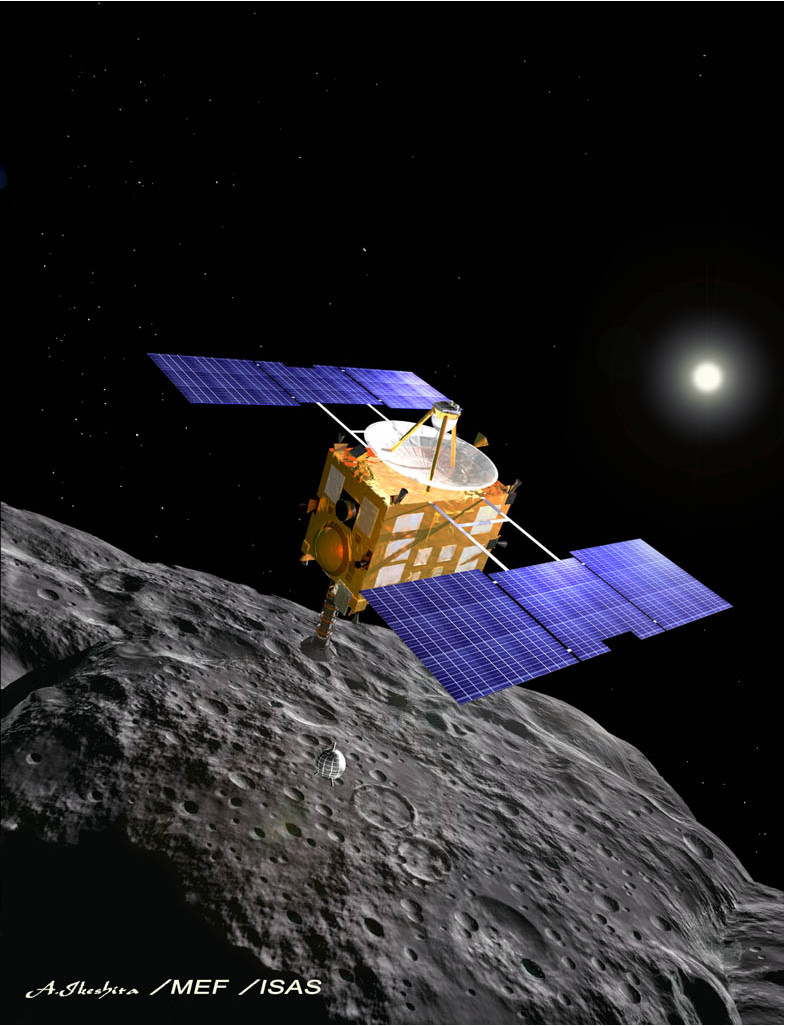[/caption]
No visible material from asteroid Itokawa was found inside the second compartment of a canister returned to Earth by the Hayabusa spacecraft. However, JAXA also announced that more micron-sized grains have been found in the first compartment, opened earlier this year. Reportedly, the first compartment has about 1,500 tiny particles, however some might be aluminum particles from the container itself. But about 20 grains were rocky or mineral-based. However, according to the Daily Yomiuri Online, no visible material was inside the second chamber, although further investigations of the second compartment will be done with a special microscope.
Hayabusa attempted to land on Itokawa twice. The cylindrical canister was divided into two chambers, and the second chamber was to contain material collected during the spacecraft’s first landing.
JAXA officials expect the second compartment to contain more microscopic particles from Itokawa since the first landing was longer than the second.
As far as the particles from the first chamber, several have been observed with an electron microscope, and according to UmannedSpaceflight.com, the “rocky” ones are 30 microns in size, with several larger ones are about 100 microns.
JAXA hopes to provide more insight on the nature of the grains by the end of the year.


Well, that more or less tells you that asteroid is covered with fine dusty particle that is probably charged. Hayabusa must have repelled it.
On approaching Itokowa at the final state of landing on it, Hayabusa´s control computer experienced an overload condition, entered a safe mode and terminated the landing procedure in order to avoid any possible collision. This is why no particles were found in the second compartment.
Hayabusa was not meant to land such that it could stand on Itokawas surface, but to hover a meter or so above the surface and fire a projectile into it. The hitting projectile was meant to create a cloud of dust and grains, part of which was expected to enter the sample chamber. But due to the unexpected computer safe mode, no data were collected and stored that could tell whether the projectile was ever fired.
I don´t recall whether the projectile cold be fired on the second landing try, but perhaps the thrust from the navigation engines may have blown particles from Itokawas surface and into Hayabusa´s first sample chamber. If the particles were charged, this would have supported the process.
I’m not sure what your guys copyright license is here, but hopefully you’re getting paid for the reuse of your material (or at least you know about it):
http://www.physorg.com/news/2010-12-asteroid-particles-hayabusa-compartment.html
Yeah, Fraiser has a post about about the UT Syndication Policy here: http://www.universetoday.com/81610/universe-today-syndication-policy-steal-our-content-please/
BTW, great to see several UT stories on PhysOrg recently, as it helps get the word out!
Oops, *Fraser* 🙂
Possibly repelling, both dust and craft should be slightly positive from electron loss.
But this accords with the first chamber, nothing was seen at first glance there either.